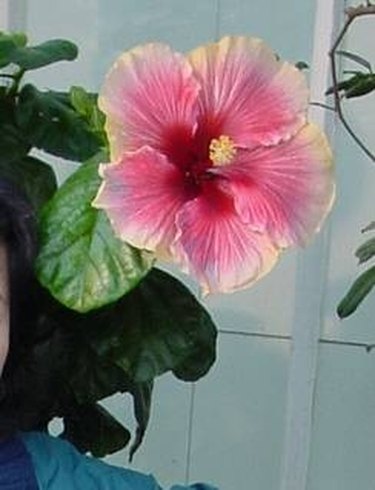
Hibiscus is a large genus of tropical flowers and is sometimes known as rosemallow. These flowering plants are part of the family Malvaceae, which includes plants such as cocoa, okra and cotton. It is native to warm climates and grows throughout the world. Hibiscus includes both annual and perennial plants, shrubs and small trees.
Function
Video of the Day

Hibiscus is typically grown by gardeners for its attractive flowers or used in landscaping. However, it also has many other uses outside of the garden. It is a main ingredient in herbal teas and jams--and some species are even used as a vegetable. It is also commonly used in herbal medicine.
Video of the Day
In the Hindu religion, hibiscus is used as an offering to the goddess Kali and the god Ganesha. In southern India, the plant is used for hair care. Protective oils for the hair are made from the leaves and flowers, then applied to the scalp and hair to prevent dandruff and hair loss.
Hibiscus flowers are also used by Hawaiian women. A single flower is tucked behind one ear, an indication of the woman's availability for marriage. In Mexico, the dried plant is eaten as a delicacy. In the Philippines, children use the sticky juices from crushed hibiscus to blow bubbles through a Papaya stalk.
Features

Hibiscus features simple, alternate leaves with a lobed margin. The flowers are brightly colored, large and trumpet-shaped with at least five petals, and they grow from 4 to 15 cm in width. The colors range from white to pink or red, yellow or purple. Hibiscus fruit is dry and contains several seeds in each of its five lobes. The stems are woody, and the plant can grow anywhere from 4 inches to 15 feet in height.
Types

There are many different types of hibiscus. The most common is the common garden hibiscus, or Hibiscus Syriacus. In tropical regions, the Chinese hibiscus is most commonly grown and prized for its ornamental flowers.
There are more than 200 different species of hibiscus known today. Some of these include California hibiscus, Neches river-rose mallow, Phillip Island Hibiscus, Native Rosella and Hau.
Benefits
Hibiscus is aromatic and astringent. It is used in herbal medicine because of its diuretic properties. It is also known to lower fevers and provide the body with vitamin C. It contains mucilage, organic acids and pectins, which contribute to its healing properties.
Warning
Some species of hibiscus produce seed pods covered in hairs that may irritate the skin. It's best to wear gloves while handling the plant. Another disadvantage of hibiscus is, although the flowers are large and showy, they typically last for a very short period. They are also known for pest infestation, specifically Japanese beetles. However, this problem can usually be avoided with proper care and maintenance.